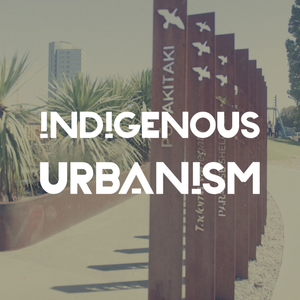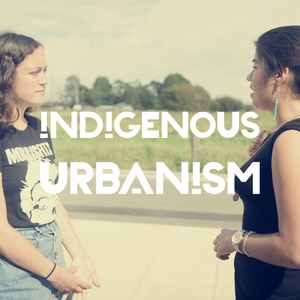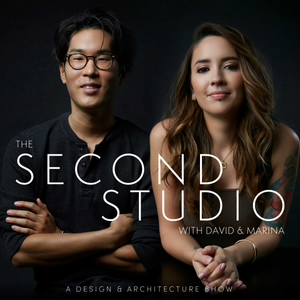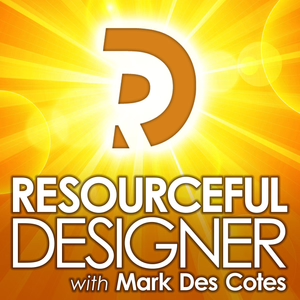
Ōtautahi Revealed Pt 2
11/15/18 • 20 min
EPISODE SUMMARY: In part two of our story on the Ōtautahi rebuild, we look at the work of Ngāi Tahu and Regenerate Christchurch to develop alternative uses for the residential red zone area to the east of the City, including the re-establishment of biodiversity and food gathering areas.
GUESTS: Teoti Jardine, Hugh Nicholson, Debbie Tikao, Te Marino Lenihan, Evan Smith
FULL TRANSCRIPT:
Jade Kake v/o: On September 4th 2010, February 22nd 2011, and many occasions afterwards, major earthquakes shook the city of Christchurch, allowing the old wetlands to temporarily re-establish themselves, and leaving swathes of land, especially to the east of the city, uninhabitable.
After its century-old Treaty of Waitangi claim was settled in 1999, Ngāi Tahu made quick work of restoring its political, cultural, and economic influence. However, Christchurch remained visually and culturally dominated by English aesthetics and values.
What’s happening in Christchurch today may be a world first situation, and in the wake of a devastating natural disaster, the local indigenous people are involved in the redesign of a city from the highest governance level right through to the actual physical reconstruction.
Teoti Jardine: The empty places behind you, and the empty places where we were, they were filled with street after street of empty houses. The people had gone, their houses were there waiting to be demolished. And it was coming up to our Matariki celebration, that was over in our other little area which was a Council playground. Where for the first time after the earthquakes, people were coming to plant again, and to reconnect with the land. So, now, I'll shut up and tell you.
It's called Rezoned.
Empty breezes wander streets
Where the windows of silent houses
Gaze without any expectations
There was no time for farewells
Only the hurried leavings
Come quickly, don't turn back
Nothing is left here now
Yet, around abandoned playgrounds
Children's laughter lingers
Making the invitation, to come
Grow, plant, forage
Among the stories of those who stayed
Singing, swimming, roosting
Through sunshine, rains and mist
Filling the breezes with hope
Kia ora koutou.
JK v/o: Tēnā koutou katoa
Nau mai haere mai ki te Indigenous Urbanism, Aotearoa Edition, Episode twenty-two.
I’m your host Jade Kake and this is Indigenous Urbanism, stories about the spaces we inhabit, and the community drivers and practitioners who are shaping those environments and decolonising through design.
On this episode of Indigenous Urbanism, part two of our story on the Ōtautahi rebuild, we look at the work of Ngāi Tahu and Regenerate Christchurch to develop alternative uses for the residential red zone area to the east of the City, including the re-establishment of biodiversity and food gathering areas.
TJ: Tēnā koutou katoa, Ko Teoti Jardine ahau, Ko Waitahi, ko Kati Mamoe, ko Kai Tahu oku iwi.
JK v/o: That was Teoti Jardine. Teoti is a poet from Ōtautahi and a kaumātua for the Avon-Ōtākaro network.
TJ: It wasn’t long, that in my connection with the red zone, that I realised I'm walking through the memories and the stories of my Waitaha, Kati Mamoe, Kai Tahu tūpuna. Who came here for hundreds of years gathering food, and gathering resources and teaching their children how to do this mahi. And, when they did this, they came and they greeted the rivers, they greeted the land, and the land nourished them, and their greetings nourished the land. And for me, those memories, those stories of my tūpuna, are in this land. And whatever happens to the red zone, those memories and those stories need to be honoured in whatever way it's possible. We've just seen how some of these stories can be honoured in the city. The red zone is a clean slate. No-one knows quite what to do with it. But for me, it's a place that holds those memories from hundreds of years ago, and those stories from hundreds of years ago. And they feel, now with my connection to the red zone, they feel like they are my memories now. And they are my stories. And whatever happens in the red zone, I would like to see some honouring of what those stories are. My tūpuna, my ancestors, we were the first ones to be red zoned. When the settlers came we had to move, and now they came and they built in the place where, our old people said why are they building here? This was our food basket. But, oh no, we'll drain it and build houses. Well, you can see what happened. And, for me, Ruaumoko has returned the land to us, and given us the opportunity to allow the land to return to its original purpose, which was a mahika kai, a place where we gathered food. We’ve seen downtown how those reflections of our tūpuna are happening now. They weren't there before the earthquake. So, honestly, the earthquake has given us this opportunity to place o...
EPISODE SUMMARY: In part two of our story on the Ōtautahi rebuild, we look at the work of Ngāi Tahu and Regenerate Christchurch to develop alternative uses for the residential red zone area to the east of the City, including the re-establishment of biodiversity and food gathering areas.
GUESTS: Teoti Jardine, Hugh Nicholson, Debbie Tikao, Te Marino Lenihan, Evan Smith
FULL TRANSCRIPT:
Jade Kake v/o: On September 4th 2010, February 22nd 2011, and many occasions afterwards, major earthquakes shook the city of Christchurch, allowing the old wetlands to temporarily re-establish themselves, and leaving swathes of land, especially to the east of the city, uninhabitable.
After its century-old Treaty of Waitangi claim was settled in 1999, Ngāi Tahu made quick work of restoring its political, cultural, and economic influence. However, Christchurch remained visually and culturally dominated by English aesthetics and values.
What’s happening in Christchurch today may be a world first situation, and in the wake of a devastating natural disaster, the local indigenous people are involved in the redesign of a city from the highest governance level right through to the actual physical reconstruction.
Teoti Jardine: The empty places behind you, and the empty places where we were, they were filled with street after street of empty houses. The people had gone, their houses were there waiting to be demolished. And it was coming up to our Matariki celebration, that was over in our other little area which was a Council playground. Where for the first time after the earthquakes, people were coming to plant again, and to reconnect with the land. So, now, I'll shut up and tell you.
It's called Rezoned.
Empty breezes wander streets
Where the windows of silent houses
Gaze without any expectations
There was no time for farewells
Only the hurried leavings
Come quickly, don't turn back
Nothing is left here now
Yet, around abandoned playgrounds
Children's laughter lingers
Making the invitation, to come
Grow, plant, forage
Among the stories of those who stayed
Singing, swimming, roosting
Through sunshine, rains and mist
Filling the breezes with hope
Kia ora koutou.
JK v/o: Tēnā koutou katoa
Nau mai haere mai ki te Indigenous Urbanism, Aotearoa Edition, Episode twenty-two.
I’m your host Jade Kake and this is Indigenous Urbanism, stories about the spaces we inhabit, and the community drivers and practitioners who are shaping those environments and decolonising through design.
On this episode of Indigenous Urbanism, part two of our story on the Ōtautahi rebuild, we look at the work of Ngāi Tahu and Regenerate Christchurch to develop alternative uses for the residential red zone area to the east of the City, including the re-establishment of biodiversity and food gathering areas.
TJ: Tēnā koutou katoa, Ko Teoti Jardine ahau, Ko Waitahi, ko Kati Mamoe, ko Kai Tahu oku iwi.
JK v/o: That was Teoti Jardine. Teoti is a poet from Ōtautahi and a kaumātua for the Avon-Ōtākaro network.
TJ: It wasn’t long, that in my connection with the red zone, that I realised I'm walking through the memories and the stories of my Waitaha, Kati Mamoe, Kai Tahu tūpuna. Who came here for hundreds of years gathering food, and gathering resources and teaching their children how to do this mahi. And, when they did this, they came and they greeted the rivers, they greeted the land, and the land nourished them, and their greetings nourished the land. And for me, those memories, those stories of my tūpuna, are in this land. And whatever happens to the red zone, those memories and those stories need to be honoured in whatever way it's possible. We've just seen how some of these stories can be honoured in the city. The red zone is a clean slate. No-one knows quite what to do with it. But for me, it's a place that holds those memories from hundreds of years ago, and those stories from hundreds of years ago. And they feel, now with my connection to the red zone, they feel like they are my memories now. And they are my stories. And whatever happens in the red zone, I would like to see some honouring of what those stories are. My tūpuna, my ancestors, we were the first ones to be red zoned. When the settlers came we had to move, and now they came and they built in the place where, our old people said why are they building here? This was our food basket. But, oh no, we'll drain it and build houses. Well, you can see what happened. And, for me, Ruaumoko has returned the land to us, and given us the opportunity to allow the land to return to its original purpose, which was a mahika kai, a place where we gathered food. We’ve seen downtown how those reflections of our tūpuna are happening now. They weren't there before the earthquake. So, honestly, the earthquake has given us this opportunity to place o...
Previous Episode

Ōtautahi Revealed
EPISODE SUMMARY: On this episode of Indigenous Urbanism, we travel to Ōtautahi Christchurch to see how Ngāi Tahu and Ngāi Tūāhuriri are working with the City, designers and developers to reveal and rebuild a world leading, authentic, post-colonial city of the future.
GUESTS: Joseph Hullen, Te Marino Lenihan, Piri Cowie, Jo Petrie, Debbie Tikao, Te Aritaua Prendergast
FULL TRANSCRIPT:
Jade Kake v/o: Ru ana te whenua - the earth starts to tremble. Rūaumoko must be stirring. At the time that the sky father Ranginui was separated from the earth mother Papatūānuku, they had an unborn child, Rūaumoko, who was still inside his mother’s womb. Today he remains there, sometimes moving and turning. And when he moves, the earth shakes.
The earthquakes that shook Christchurch in 2010 and 2011 were a traumatic series of events causing death and extreme adversity. But out of the wreck of what was Christchurch, a new city is being planned, and local iwi Ngāi Tahu have had a prominent role in the process. It has been seen as a chance to build, more or less from scratch, a post-colonial city, inclusive of everyone; and with a strong recognition of the mana whenua of local hapū, Ngāi Tūāhuriri.
Joseph Hullen: Kia ora everybody. We’ve stopped here for a couple of reasons. From my perspective, across the river is the Pita Te Hori centre. Pita Te Hori was the first Ūpoko Rūnanga of Ngāi Tūāhuriri. The Pita Te Hori Centre is a Ngai Tahu properties development.
JK v/o: That was Joseph Hullen. Joseph Hullen works for Te Rūnanga o Ngāi Tahu, is involved in a range of environmental and ecological projects, and is a Trustee for Matapopore Trust. And today, Joseph was our tour guide on a walking tour around Christchurch City. As part of our tour, we paused at the terraces on the banks of the Avon Ōtākaro river, opposite the Pita Te Hori centre.
JH: I was talking a little bit earlier about stormwater treatment, and flowing into the river. So during the application for consents and stuff, in consultation with Ngāi Tūāhuriri, Ngāi Tahu properties understood that they needed to treat all of their stormwater onsite, before it goes into the plumbed stormwater network, and flows into the river. So it was a case of Ngāi Tūāhuriri and Ngāi Tahu walking the walk, and talking the talk. So, when the rōpū kaitiaki, when Ngāi Tūāhuriri representatives sit in on consent applications, give consultation to developments, one of the things we ask for is - wherever possible - stormwater is treated onsite, and then, in it's own way, that benefits the resource, the awa, improved water quality means improved values, and improved mahinga kai. The other part of it, we’re trying to normalise that whole kaitiakitanga aspect when it comes to development in the CBD. And so we’re trying to normalise that whole, be responsible for your own stuff onsite, and normalising that, in the same way we’re trying to normalise the language.
Te Marino Lenihan: You’re sitting on the terraces and part of the vision is greater engagement between people and our river.
That was Te Marino Lenihan, a Ngāi Tūāhuriri cultural landscape consultant who has worked extensively for his hapū and iwi in Ōtautahi.
TML: Part of the vision is to host things on that side of the river, have people over here enjoying the sunshine, the seating arrangement. And so, further to what I was saying before about language and the use of language, we've put a little message over there into the steps. It's taken from a Māori land court session in 1879, when Wiremu Te Uki, I think my great-great grandfather's brother, older brother, presented evidence, and we started to claim all our mahinga kai sites in the city. We we weren't so successful. But what he said was, "the name of this river is Ōtākaro," and it says "nōku te awa" - "it belongs to me." What we haven't said here is, the next thing he said was, "nō ōku tūpuna." So basically saying, "this is our spot." And this is the reason why we get it, it's because we get our fish out of here. Unfortunately they said, sorry Māori mā, it's already been sold. So we just remind ourselves of those stories by putting those messages back into the landscape.
Piri Cowie: Tēnā koutou, I just thought I might tautoko the kōrero.
JK v/o: That was Ngai Tahu artist Piri Cowie. Piri has been involved in bringing Ngāi Tahu narratives to life visually in many of the projects in post-earthquake Christchurch.
PC: One of our other projects that we worked on, in the Pita Te Kori Centre, which you can see across there, is a sculpture called Kirihao. Hao is a Ngāi Tahu word for eel. Kiri is your skin. But it talks about, somebody who's thick-skinned or tenacious, and who's resilient. The name of the sculpture if you see through there is called Kirihao, resilience. But it's a reminder of the connection to our awa here, to our tuna, to mahinga kai, but also just for us, that we belo...
Next Episode

In Conversation with Cheyenne Thomas
EPISODE SUMMARY: On this episode of Indigenous Urbanism, we speak with Cheyenne Thomas, an architectural designer from Peguis First Nation, about her work with First Nations communities in Manitoba, and her role as a designer and advocate.
GUESTS: Cheyenne Thomas
FULL TRANSCRIPT:
Jade Kake v/o: Tēnā koutou katoa
Nau mai haere mai ki te Indigenous Urbanism, Aotearoa Edition, Episode twenty-three.
I’m your host Jade Kake and this is Indigenous Urbanism, stories about the spaces we inhabit, and the community drivers and practitioners who are shaping those environments and decolonising through design.
On this episode of Indigenous Urbanism, we speak with Cheyenne Thomas, an architectural designer from Peguis First Nation, about her work with First Nations communities in Manitoba, and her role as a designer and advocate.
Cheyenne Thomas: I am Anishanaabe, Ojibwe, that's my tribe. From Manitoba, Canada. I grew up in Winnipeg, my whole life, and my family is from Peguis First Nation and Saugeen First Nation, and I'm a designer in architecture, and I also do installations at a bigger scale with my father, who's also a designer. The focus is Indigenous design, and so that's who we try to work with.
JK: So we were really excited to meet you this time two years ago, when you and your dad came over, and you met all of us, this Ngā Aho crew, and we started this awesome journey together. But it was really exciting for me just to meet another young woman just smashing it. And then we went over to see you again last year. And so, I just wanted to maybe ask you a little bit about your practice and projects over back home, and what are some of things you're working on, and how have you kind of connected that with some of the exchange and experiences we've had?
CT: Okay, so, I did two buildings with my dad, we designed. They're 75,000 square foot buildings for two different First Nations in Manitoba. That was in the process when we met, two years ago. From that, we worked on the Assiniboine Park, revitalisation of the whole park, which is 1,000 acres in mass. They have a massive building, and a couple gardens. Part of it was to have an Indigenous garden, where they brought me and my dad on as lead designers. From when we did meet at the last hui, there was, it was more than just a conference, it was more people together, not so formal, where we could really connect without the labelling of architect, landscape architect, industrial designer. Where you actually have a collective of people just kind of supporting you, and from that there was different things we did during the conference, like sing songs, eat together, feast together, sleep together in the same marae. So for the Assiniboine Park I tried to architect the process, where we consulted with my community, our communities in Manitoba. So I got them to, I brought singers in, I brought food in as a component, to eat together, have discussions while you're nourishing your body. And those are all inspired by my experience at the last hui.
JK: I'm hearing that community-based process is really important, and the way we kind of bring in our own cultural lens and way of doing and being into that process with our communities. What was the process of engagement for that community project? How did that come about, actually?
CT: So that project, it actually, that park has been there for hundreds of years. And it's a European park. So they wanted to revitalise it, and they had the big building, designed by KPMP in Toronto, and they also had a couple gardens. The head of the park went to a community presentation, and this one Native girl said, I do not see myself in this park at all. So, she took, that was a pivotal moment for her, in the project. And for the Indigenous gardens, knew that was really important to have Indigenous designers. So, approached my dad and I, to start discussing and imagining this process of bringing our people into this consultation process.
JK: Now you talked about your dad a bit, and so it's pretty amazing the two of you work together quite closely on a lot of projects. Was your dad a big part of the reason why you got into architecture, or what kind of led you into architecture?
CT: I guess I was exposed to architecture, not just architecture, I was exposed to design, creativity, the whole creative process. Which at the time was not named the creative process. It was just exploring different ways of expressing building, and moving things around, creating or designing your own spaces to excite your childhood imagination, right? So I grew up with having that. Big pads of paper to draw on, this very loose way of moving around, and expressing yourself. So when I got older, went to University, all these courses I took. They weren't as exciting to me, they seemed very, not that there's anything wrong with those, I just grew up a totally different way, ...
If you like this episode you’ll love
Episode Comments
Generate a badge
Get a badge for your website that links back to this episode
<a href="https://goodpods.com/podcasts/indigenous-urbanism-68738/%c5%8dtautahi-revealed-pt-2-3641680"> <img src="https://storage.googleapis.com/goodpods-images-bucket/badges/generic-badge-1.svg" alt="listen to ōtautahi revealed pt 2 on goodpods" style="width: 225px" /> </a>
Copy




